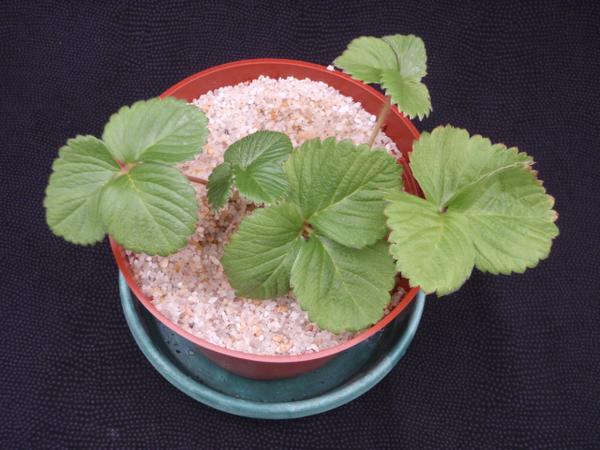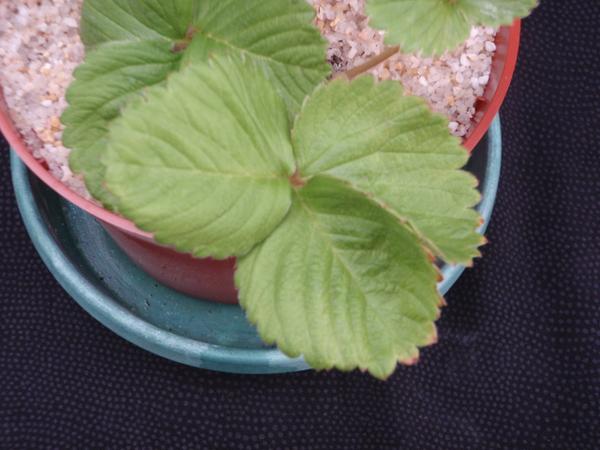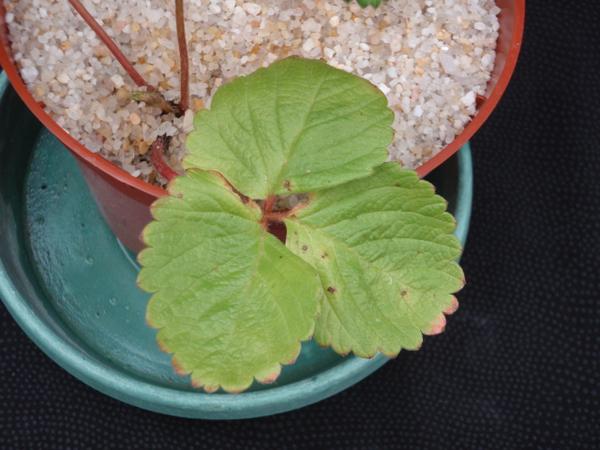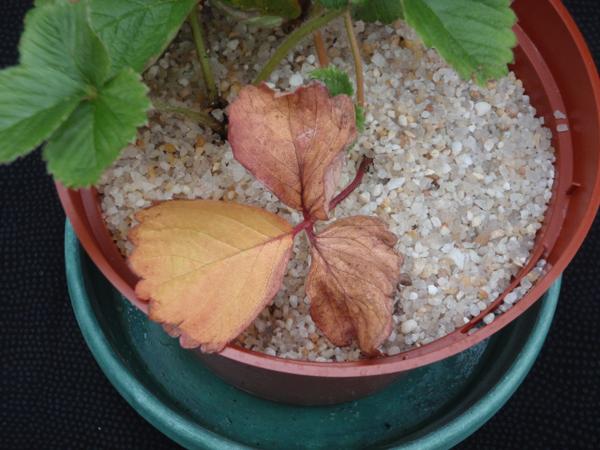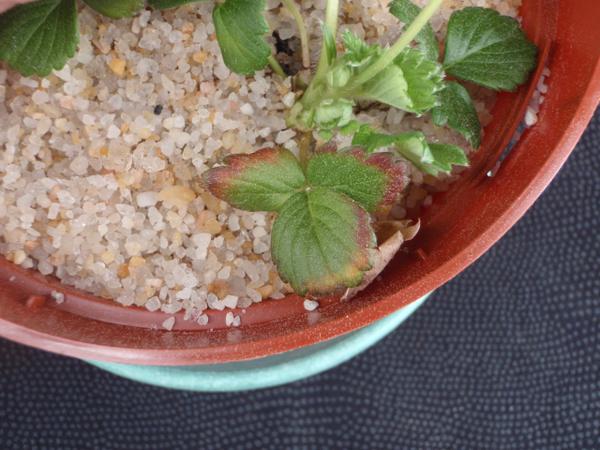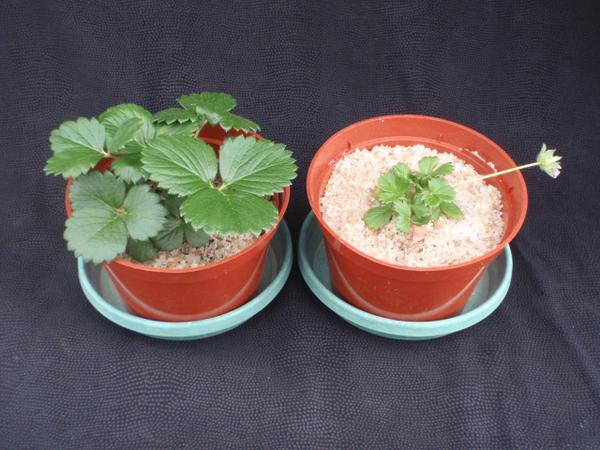Problem:
Nutritional disorder – nitrogen (N) deficiency
Symptoms
Lower leaves initially develop a pale green to light yellow (chlorosis) coloration. With advancing symptoms, the light yellow coloration becomes more intense yellow and expands to cover most of lower leaves. Severe deficiencies result in necrotic leaves and leaf drop. Some older leaves may also develop an orange to reddish coloration.
Plants appear stunted, runners shorter and leaf size is smaller. The petiole may develop a red cast and the fruit calyx may become red too.
Similar Problems
Symptoms of phosphorus deficiency can also result in lower leaf orange to reddish coloration. Impaired phosphorus update may be due to the lack of sufficient phosphorus, cold growing temperatures, water logged soils or root rot.
Additional Information
Because symptoms can occur due to many possible causes, it is important to determine the actual cause in order to correct the deficiency.
Diagnostic Tips
Take a soil sample to determine if nutrient levels are inadequate. Submit a leaf sample for nutrient analysis. The sufficiency range for nitrogen in strawberries is between 2.0 and 4.0%. Values lower than 1.9% can lead to deficient conditions. Levels above 4.0% are considered excessive.
Corrective Measures
Take a soil and tissue test to determine nutrient levels. Make adjustments based on those test results and the lab’s recommendations.
Management
Conduct a soil test prior to planting the crop to determine if pre-plant fertilizer applications are required. Fertilizer can also be injected to the crop during active growth. Recommendations vary by soil type and your location, so check with local resources for guidelines
Useful Resources
Strawberry Tissue Analysis – North Carolina
Fertilization of Strawberries in Florida – Florida
Funding Sources
Funding was provided in part by the National Sustainable Agriculture Program: Sustainable Strawberry Initiative and the following sources.
A thank you is also expressed to Kube Pak of Allentown, New Jersey for donating strawberry plants.
Publication date: April 23, 2014
N.C. Cooperative Extension prohibits discrimination and harassment regardless of age, color, disability, family and marital status, gender identity, national origin, political beliefs, race, religion, sex (including pregnancy), sexual orientation and veteran status.

